
How to Use DC-DC 12V to 3.3V 5V 12V Power Module: Examples, Pinouts, and Specs
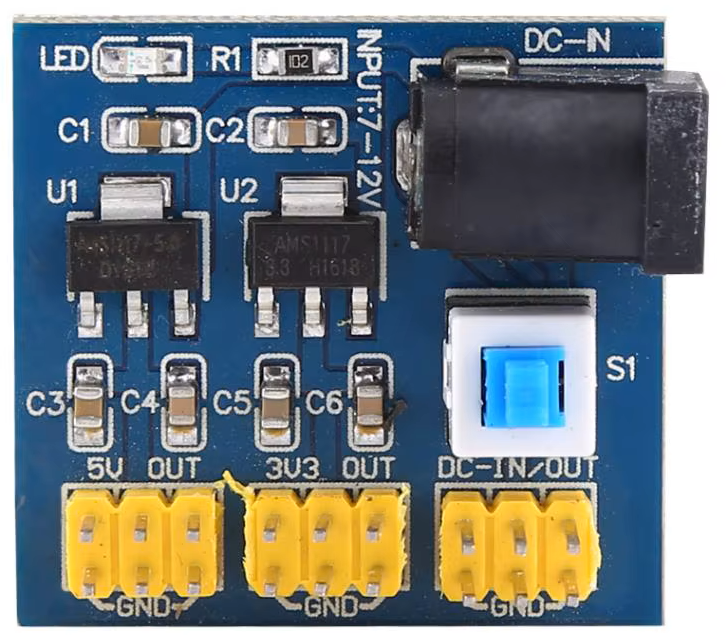
 Design with DC-DC 12V to 3.3V 5V 12V Power Module in Cirkit Designer
Design with DC-DC 12V to 3.3V 5V 12V Power Module in Cirkit DesignerIntroduction
The Hailege DC-DC 12V to 3.3V 5V 12V Power Module (Manufacturer Part ID: B07Z3FPNTK) is a versatile power conversion module designed to step down a 12V input voltage to multiple output voltages, including 3.3V, 5V, and 12V. This module provides stable and efficient power for a wide range of electronic devices, making it an essential component for embedded systems, IoT devices, and prototyping projects.
Explore Projects Built with DC-DC 12V to 3.3V 5V 12V Power Module
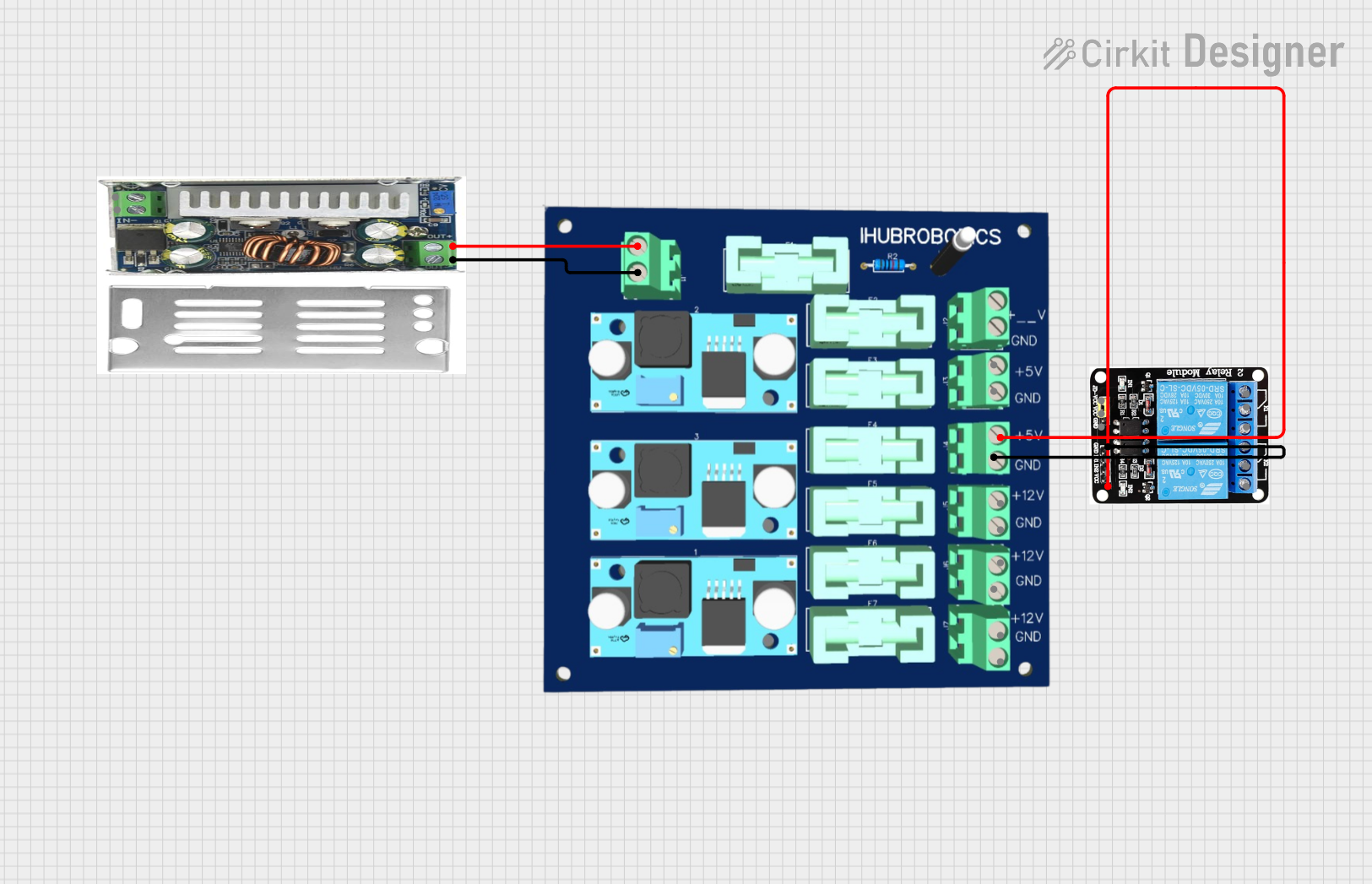
 Open Project in Cirkit Designer
Open Project in Cirkit Designer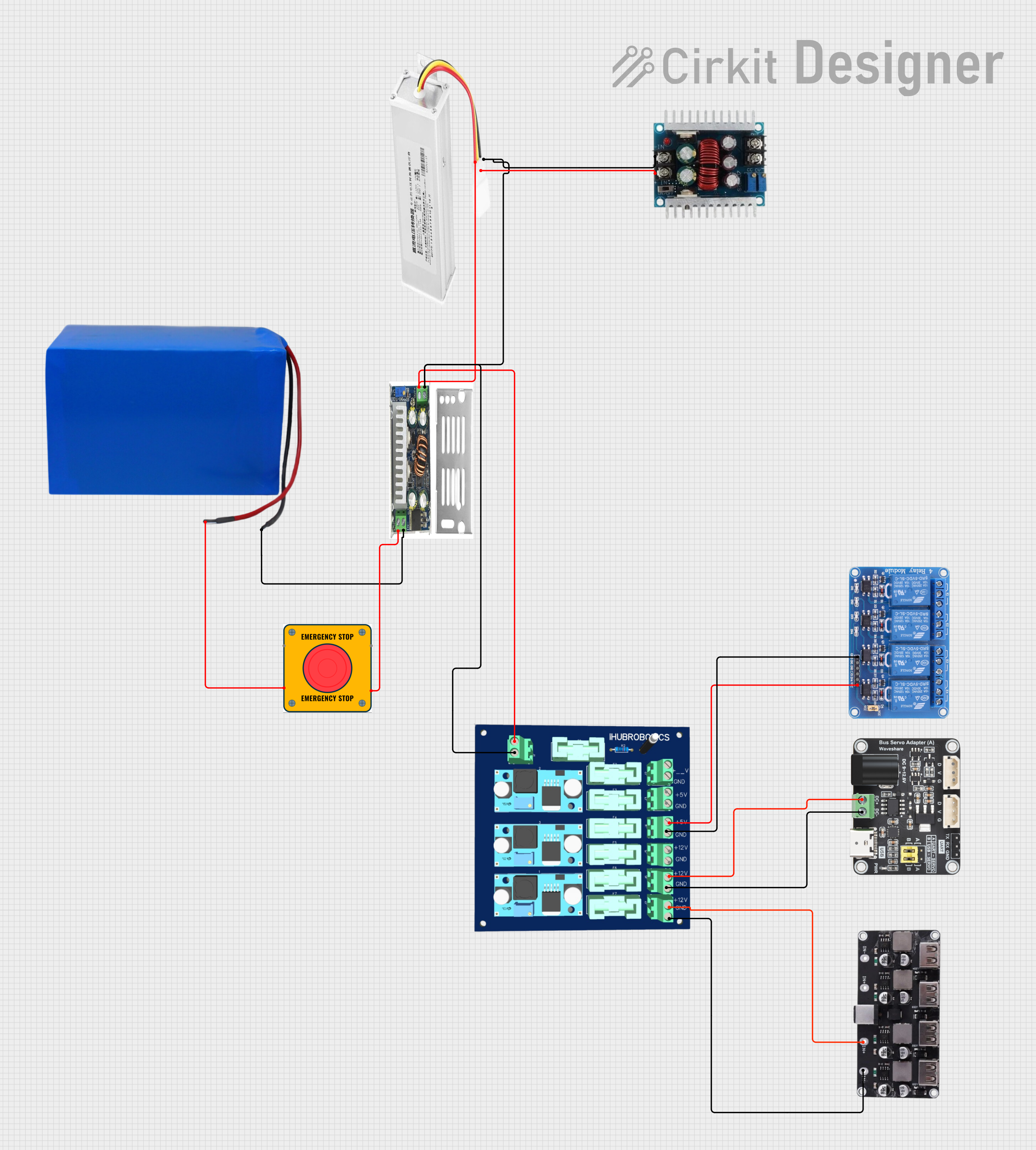
 Open Project in Cirkit Designer
Open Project in Cirkit Designer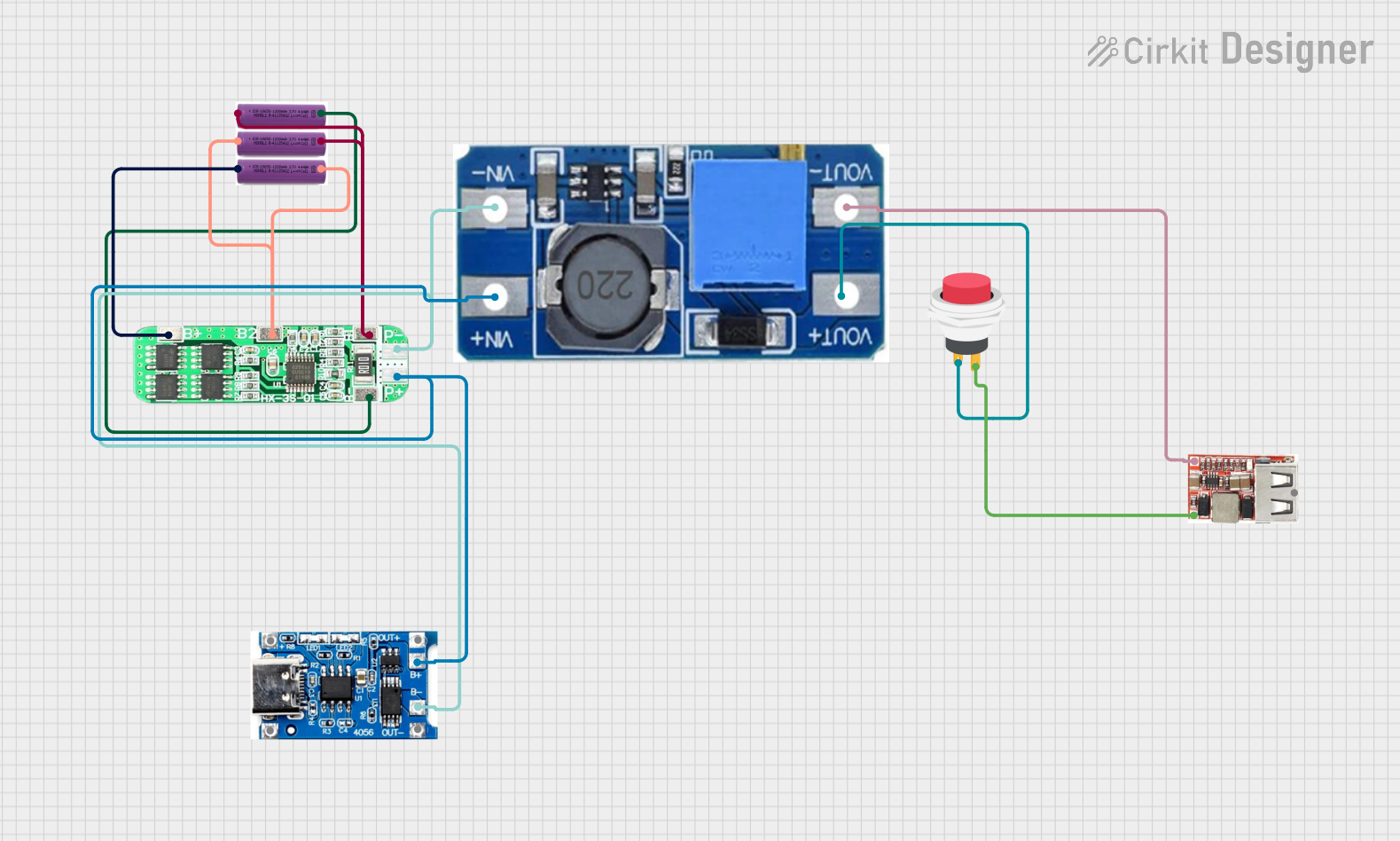
 Open Project in Cirkit Designer
Open Project in Cirkit Designer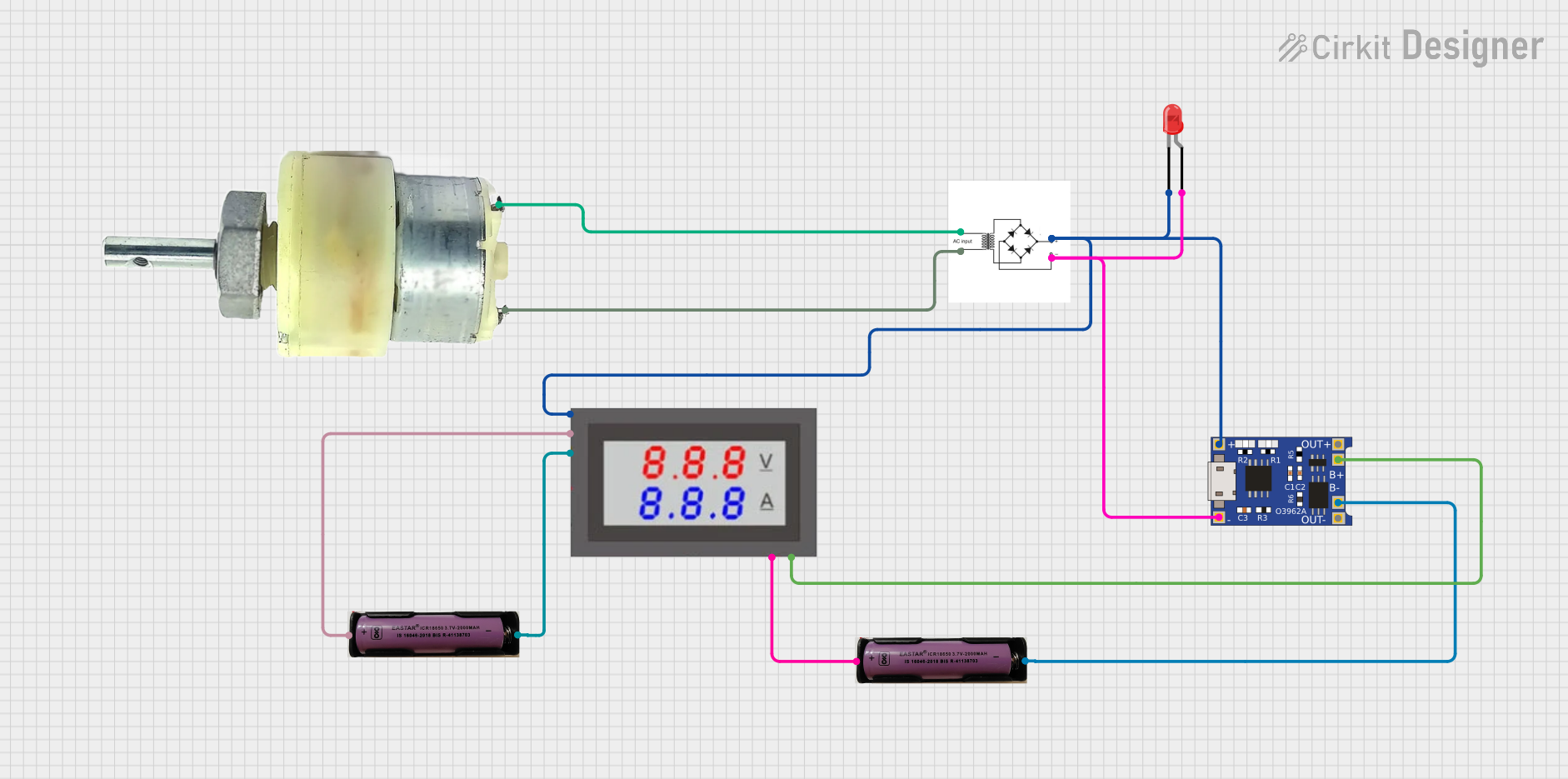
 Open Project in Cirkit Designer
Open Project in Cirkit DesignerExplore Projects Built with DC-DC 12V to 3.3V 5V 12V Power Module

 Open Project in Cirkit Designer
Open Project in Cirkit Designer
 Open Project in Cirkit Designer
Open Project in Cirkit Designer
 Open Project in Cirkit Designer
Open Project in Cirkit Designer
 Open Project in Cirkit Designer
Open Project in Cirkit DesignerCommon Applications and Use Cases
- Powering microcontrollers such as Arduino, ESP32, or Raspberry Pi.
- Supplying stable voltage to sensors, relays, and other peripherals.
- Prototyping circuits requiring multiple voltage levels.
- Battery-powered systems where efficient voltage regulation is critical.
Technical Specifications
Below are the key technical details of the Hailege DC-DC Power Module:
| Parameter | Value |
|---|---|
| Input Voltage Range | 12V DC |
| Output Voltage Options | 3.3V, 5V, 12V DC |
| Output Current | Up to 2A (varies by output voltage) |
| Efficiency | Up to 92% |
| Operating Temperature | -40°C to +85°C |
| Dimensions | 45mm x 25mm x 15mm |
| Weight | 10g |
Pin Configuration and Descriptions
The module has a simple pinout for easy integration into circuits:
| Pin Name | Description |
|---|---|
| VIN | Input voltage pin (connect to 12V DC power source). |
| GND | Ground pin (common ground for input and output). |
| VOUT 3.3V | 3.3V output pin for low-voltage devices. |
| VOUT 5V | 5V output pin for standard peripherals. |
| VOUT 12V | 12V output pin for devices requiring 12V. |
Usage Instructions
How to Use the Component in a Circuit
Connect the Input Voltage:
- Attach the VIN pin to a 12V DC power source.
- Connect the GND pin to the ground of the power source.
Select the Desired Output Voltage:
- Use the VOUT 3.3V, VOUT 5V, or VOUT 12V pins to power your devices.
- Ensure the connected device does not exceed the maximum current rating of the module.
Verify Connections:
- Double-check all connections to avoid short circuits or incorrect wiring.
Power On:
- Turn on the 12V power source. The module will regulate the voltage and provide stable outputs.
Important Considerations and Best Practices
- Heat Dissipation: If the module is used at high currents (close to 2A), ensure proper ventilation or add a heatsink to prevent overheating.
- Load Compatibility: Verify that the connected devices are compatible with the output voltage and current ratings.
- Polarity Protection: Ensure correct polarity when connecting the input voltage to avoid damaging the module.
- Noise Filtering: For sensitive applications, consider adding capacitors at the output pins to reduce noise.
Example: Using with Arduino UNO
The 5V output of the module can be used to power an Arduino UNO. Below is an example circuit and code:
Circuit Connections
- Connect the VIN pin of the module to a 12V DC power source.
- Connect the GND pin of the module to the ground of the power source and Arduino.
- Connect the VOUT 5V pin of the module to the 5V pin of the Arduino UNO.
Example Code
// Example code to blink an LED using Arduino UNO powered by the DC-DC module
const int ledPin = 13; // Built-in LED pin on Arduino UNO
void setup() {
pinMode(ledPin, OUTPUT); // Set the LED pin as an output
}
void loop() {
digitalWrite(ledPin, HIGH); // Turn the LED on
delay(1000); // Wait for 1 second
digitalWrite(ledPin, LOW); // Turn the LED off
delay(1000); // Wait for 1 second
}
Troubleshooting and FAQs
Common Issues Users Might Face
No Output Voltage:
- Cause: Incorrect wiring or insufficient input voltage.
- Solution: Verify the input voltage is 12V and check all connections.
Overheating:
- Cause: Excessive current draw or poor ventilation.
- Solution: Reduce the load current or add a heatsink to the module.
Voltage Instability:
- Cause: Noise or insufficient filtering.
- Solution: Add capacitors (e.g., 10µF and 0.1µF) across the output pins.
Device Not Powering On:
- Cause: Incorrect output voltage selection.
- Solution: Ensure the device is connected to the correct output pin (3.3V, 5V, or 12V).
Solutions and Tips for Troubleshooting
- Use a multimeter to measure the input and output voltages for debugging.
- Avoid exceeding the maximum current rating to prevent damage to the module.
- If the module fails to operate, inspect for physical damage or burnt components.
By following this documentation, users can effectively integrate the Hailege DC-DC 12V to 3.3V 5V 12V Power Module into their projects and ensure reliable performance.